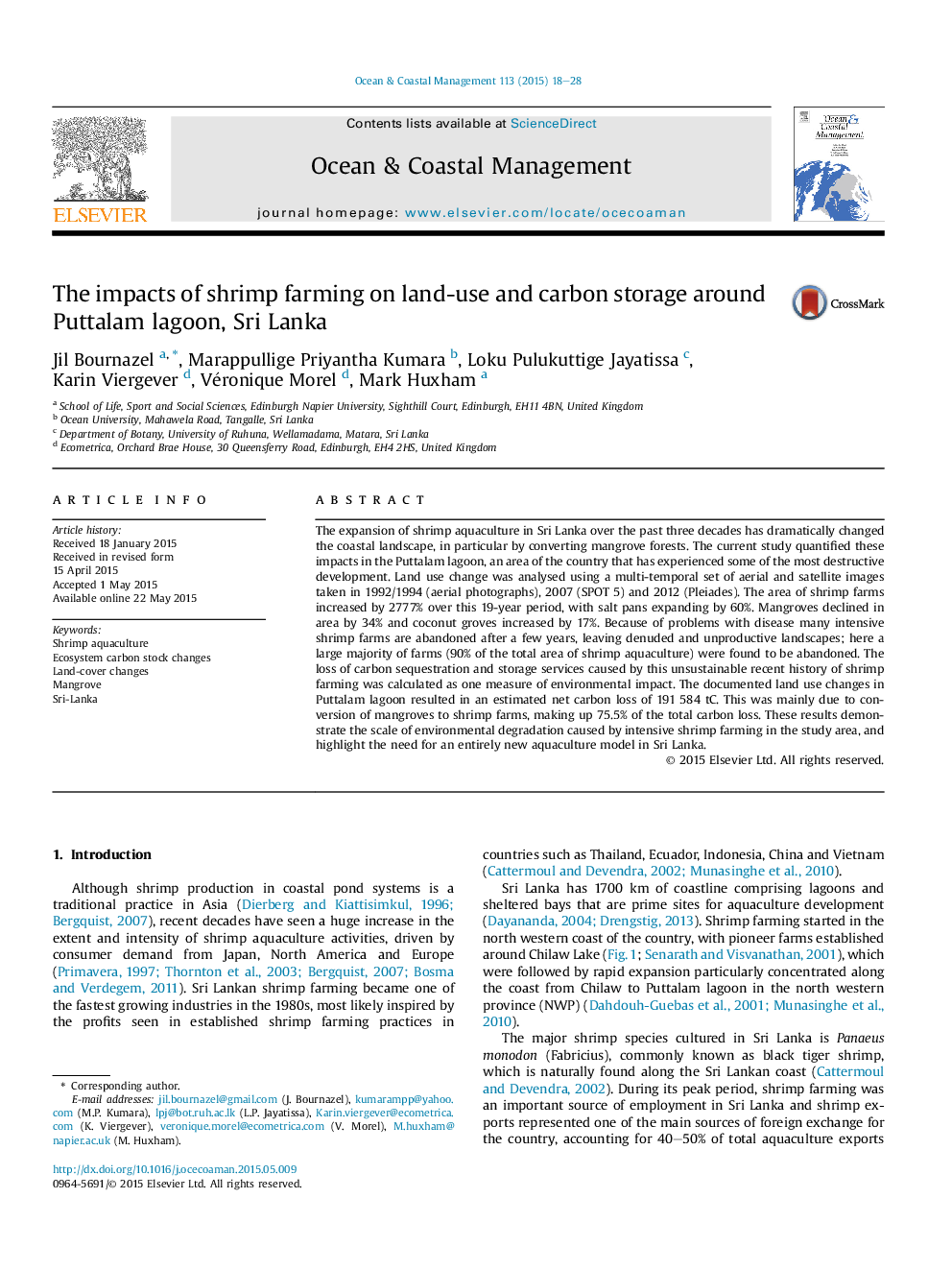| Article ID | Journal | Published Year | Pages | File Type |
|---|---|---|---|---|
| 1723460 | Ocean & Coastal Management | 2015 | 11 Pages |
•Between 1990–2012 shrimp farms were established at the expense of coastal vegetation.•90% of the ponds are now abandoned due to unsustainable development of shrimp farms.•Conversion of mangroves to shrimp ponds resulted in 75% of the total carbon loss.
The expansion of shrimp aquaculture in Sri Lanka over the past three decades has dramatically changed the coastal landscape, in particular by converting mangrove forests. The current study quantified these impacts in the Puttalam lagoon, an area of the country that has experienced some of the most destructive development. Land use change was analysed using a multi-temporal set of aerial and satellite images taken in 1992/1994 (aerial photographs), 2007 (SPOT 5) and 2012 (Pleiades). The area of shrimp farms increased by 2777% over this 19-year period, with salt pans expanding by 60%. Mangroves declined in area by 34% and coconut groves increased by 17%. Because of problems with disease many intensive shrimp farms are abandoned after a few years, leaving denuded and unproductive landscapes; here a large majority of farms (90% of the total area of shrimp aquaculture) were found to be abandoned. The loss of carbon sequestration and storage services caused by this unsustainable recent history of shrimp farming was calculated as one measure of environmental impact. The documented land use changes in Puttalam lagoon resulted in an estimated net carbon loss of 191 584 tC. This was mainly due to conversion of mangroves to shrimp farms, making up 75.5% of the total carbon loss. These results demonstrate the scale of environmental degradation caused by intensive shrimp farming in the study area, and highlight the need for an entirely new aquaculture model in Sri Lanka.
